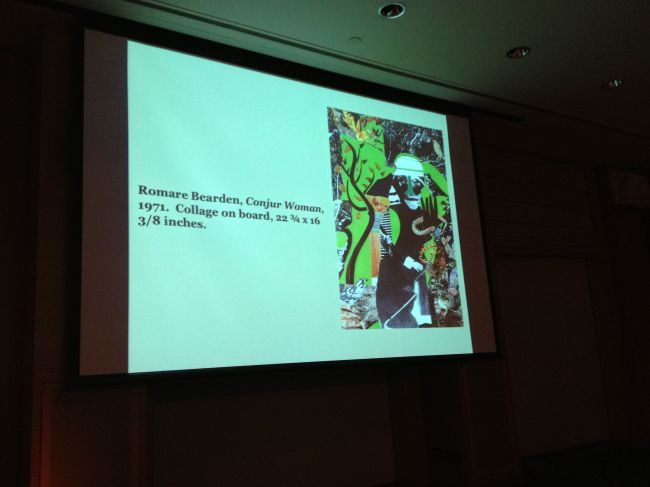 January
22
January
22
CONJURING BEARDEN: RICHARD J. POWELL
WEDNESDAY, JANUARY 22, 2014
7:30PM-8:30PM
MICHAEL C. CARLOS MUSEUM
RECEPTION HALL
LEVEL THREE
The idea of the conjurer – someone who, through a combination of spiritual interventions, psychology, and herbalism, transforms the world – was a recurring theme in the work of artist Romare Bearden (1912-1988). “A conjur woman,” wrote Bearden, “was an important figure in a number of southern Negro rural communities.” “A conjur woman,” Bearden stated, “was greatly feared, and it was believed that she could change her appearance.” One might add to Bearden’s description another, more theoretical reading: the conjurer “as a recourse, a form of power available to the powerless in mortally intolerable situations.” (Brodhead 1993).
From his references to Caribbean folk types such as the “Obeah,” to his stage sets and costume designs for the unperformed Conjur: A Masked Folk Ballet (1970), Bearden was obsessed with the notion of African American folk knowledge and metaphysical dominion. These preoccupations were also shaped by Bearden’s experimentations in collage. A McLuhanesque vision of a society shaped by mass media and its profusion of signs, synapses, and summaries captivated Bearden and, marrying these interests to black vernacular culture, he created works that reflected the reality-defying ruptures, figural surprises, and improvisations of the “conjur woman.”
In a lecture titled Conjuring Bearden, Richard J. Powell, John Spencer Bassett Professor of Art and Art History at Duke University, examines the artist’s visual musings on African-American and Caribbean expressive mysticism, his enthrallment with a woman-engineered authority over the spiritual and, finally, his magical re-invention – via the collage and photomontage – of pictorial space and time.
PHOTOS:























You must be logged in to post a comment.